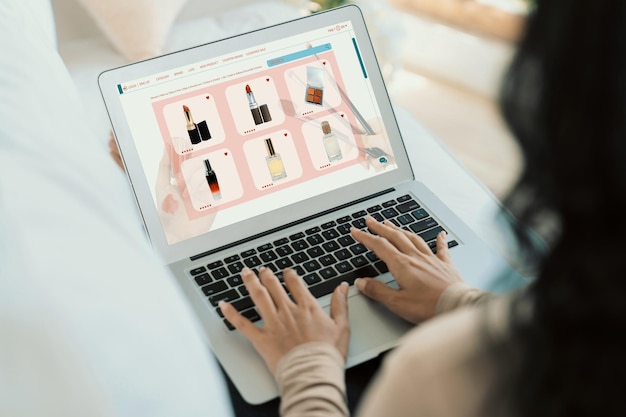Unveiling the Secrets: Launching Your Own Online Fashion Ecommerce Store
Setting out on the journey of creating an online fashion retail brand can be a thrilling adventure.
This comprehensive guide serves as your compass to steer through the intricacies of setting up and launching a thriving ecommerce store.
Addressing key elements such as pinpointing your niche, cultivating your brand, establishing your ecommerce store, selecting and procuring products, formulating effective marketing strategies, and overseeing your operations, this guide ensures you’re equipped with the necessary tools to mold your online fashion business.
Contents
- Pinpointing Your Fashion Niche
- Cultivating Your Brand
- Forming Your Ecommerce Store
- Product Selection and Procurement
- Promoting Your Fashion Brand
- Operations: Overseeing Your Business
- Subsequent Steps to Kickstart Your Journey
1. Pinpointing Your Fashion Niche
The initial step towards creating a thriving online fashion retail brand is pinpointing your niche.
With a plethora of styles, trends, and preferences, the fashion industry presents endless opportunities. By carving out a specific niche, you’re not just deciding what you’ll sell, but you’re also identifying your target audience.
Market research is vital to help you discover a niche with promising potential. This could involve analyzing popular trends, customer preferences, and understanding the competition within your chosen niche.
The objective is to discover a niche that’s not oversaturated, but still has sufficient demand for your products.
You can utilize online tools such as Google Trends, SEMRush, or even Instagram’s explore feature to uncover trending fashion styles and potential niches.
2. Cultivating Your Brand
A brand is more than a logo and a name; it’s a manifestation of your business’ core values and principles.
Your brand’s visual identity, tone of voice, and messaging should reflect what your business stands for and how it’s distinct from competitors.
To start cultivating your brand, define your brand’s mission and values. Understand what you want your brand to be recognized for and what your brand stands for. This mission and values should resonate through all your branding decisions.
For instance, if sustainability is a core value of your brand, this might influence your choice of materials, supply chain partners, and even your packaging.
When it comes to visual identity, ensure it communicates your brand’s essence. This includes your logo, color scheme, typography, and any other visual elements associated with your brand.
Use design tools like Canva or Adobe Spark for designing your brand elements. Always remember, consistency is key in branding. Whether it’s on your website, social media, or packaging, ensure a consistent look and feel.
3. Forming Your Ecommerce Store
Now that you have your brand and products, it’s time to establish your online store. Your online store should be designed keeping your target customers in mind.
The user experience should be smooth and seamless, encouraging customers to stay and shop.
Platforms like Shopify, WooCommerce, and BigCommerce provide templates and tools to set up your online store without needing extensive technical knowledge. Pick a design that aligns with your brand image, add your products, and write compelling product descriptions.
Product images are incredibly crucial for an online store, especially for a fashion brand. Invest in high-quality product photography, showing products from different angles, and even on models if possible. Images should be clear, well-lit, and professional.
Additionally, ensure your store is easy to navigate, with clear categories, search functionality, and a simple checkout process. Also, ensure your website is mobile-friendly, as a large number of consumers shop on their mobile devices.
4. Product Selection and Procurement
The products you sell are the heart of your online retail fashion brand. It’s important to curate a collection that aligns with your brand’s values and appeals to your target audience.
This means researching the latest trends, understanding your customers’ preferences, and regularly refreshing your collection to keep it exciting.
Once you’ve decided what you’re selling, it’s time to source your products. You can either make your products yourself, work with local artisans or manufacturers, or source from wholesalers or dropshippers.
When procuring, consider the quality of the products, the reputation of the manufacturer, and the costs involved.
Always ask for samples before committing to a large order.
It’s important to keep track of your inventory and ensure you’re well-stocked to avoid disappointing your customers. Use inventory management software to help you keep track of your stock levels and sales.
4.1 Sourcing Your Products: Where to Look
When building an online fashion brand, sourcing products is one of the most critical steps. There are various online platforms where you can source high-quality products to sell in your store. Here are some of the most popular ones:
1. Alibaba
Alibaba is one of the world’s largest online trading platforms, where you can find manufacturers from around the globe. The site features a vast array of products across different categories, including fashion. With Alibaba, you can source clothing items in bulk at very competitive prices. Remember to research manufacturers thoroughly and negotiate terms that protect your interests.
2. Printify
For those interested in selling custom-designed apparel, Printify is an excellent resource. This platform is a print-on-demand service that allows you to create custom designs for various apparel items, including T-shirts, hoodies, and more. You create and upload your designs, and Printify takes care of production and fulfillment whenever a customer places an order.
3. Sourcify
Sourcify is a platform that connects businesses with pre-vetted overseas factories.


